Depends on the geometry.
If your geometry is parallel beam geometry, then the answer is yes, as in this case you just have a lot of 2D scans one after the other. If you treat each of the detector projection rows as an independent data, you can reconstruct lots of 2D slices (as in the tutorial) and then stuck them together to create a 3D image.
However this is different if you are dealing with Cone Beam geometry. The radon transform does not direcly apply and quite more advanced things are needed for image reconstruction (Is should know, my PhD is about that!). If that is the case, I'd suggest you use either the FEX toolbox for CBCT or the well known ASTRA toolbox. The first one is OK, but has some intrinsic errors (which don't limit the power of the toolbox, you get some decent images out of it), the second one is widely used.
Actually, the most complete one (geometry wise) is ASTRA, as it has all possible different geometries as options, so you can always use ASTRA independently of your geometry.
Additionally, if you are interested in getting better images (if you have few projections, or noisy data, the radon transform sucks hard) you may be interested in looking into iterative algorithms, such as SART, CGLS or others. In case you are in 3D parallel beam, you could use Per Christian Hansen's AIR tools for some variety, or again, ASTRA itself.
Now, be careful my young padawan! 3D tomographic reconstruction is computationally very expensive. Like very, a lot. Some 3D algorithms can take weeks in a CPU. I hope you have a bad-ass NVIDIA GPU to deal with this! (All linked toolboxes but AIR support GPU computing).
General side-note: It's going to be hard for you to find more information in stackoverflow about this. I am really doing a PhD on CBCT image reconstruction, its just something that you cant just ask here, its way more complicated than that.
 .
.